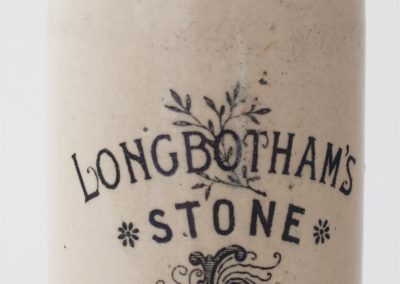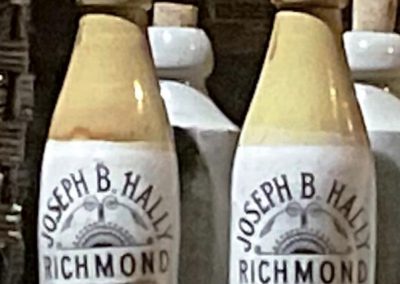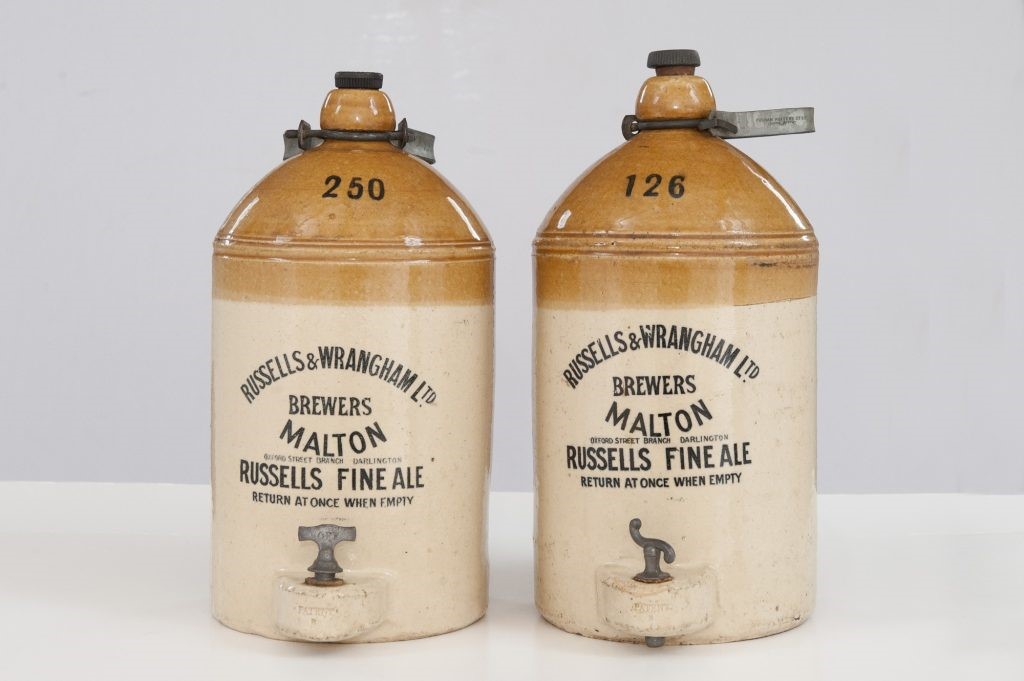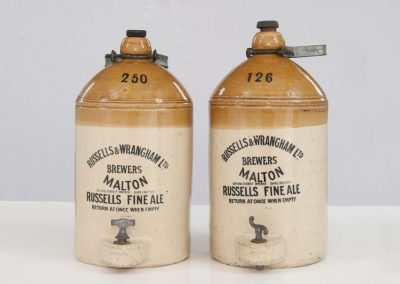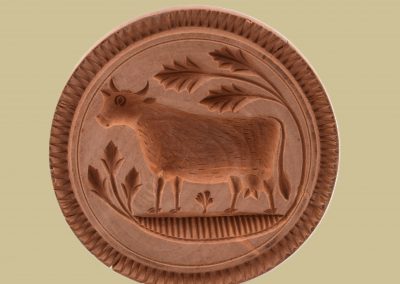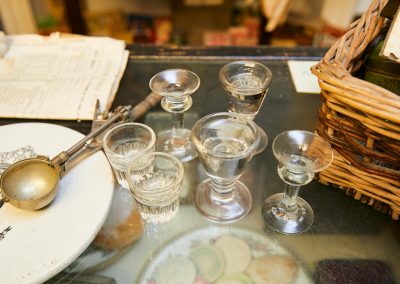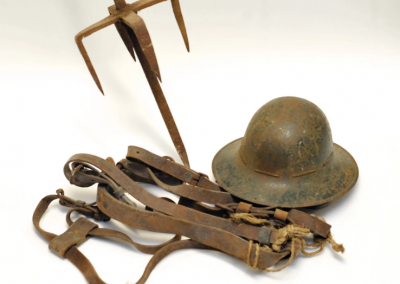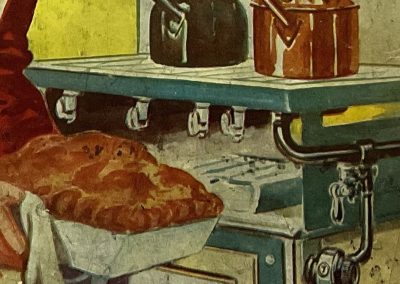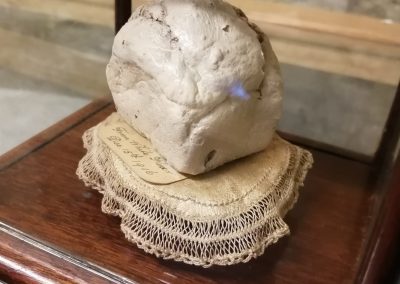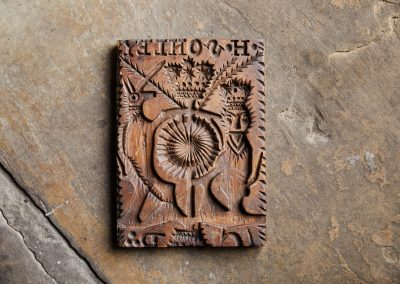Exploring Stoneware
Ginger Beer Stoneware Bottles
A century ago, it was very common for most regions to have their own selection of breweries. These provided products for their local shops and pubs, including ginger beer. This popular drink, which was originally alcoholic, actually originated in Yorkshire. With a very distinctive ginger taste, it was made by fermenting ginger, yeast and sugar.
A popular material
Stoneware bottles like this were produced in large numbers and would not have been expected to be perfect. You can often see smudges on the labels. They were used to store a variety of drinks and liquids. Created in all shapes and sizes, they were often stamped or imprinted with the place names. Wherever you live in Britain, it’s likely that there’s a bottle featuring the name of a place near you!
However, during the 1920s, concerns over the cleanliness of the bottles were raised since the contents couldn’t be seen, and ginger beer started to be sold in glass bottles. This helps us to date them. This example from Ryedale Folk Museum (pictured) was likely produced between 1890 and 1920.
Stoneware bottles were refilled many times, so they make good objects for discussing changes to consumer habits and the best materials for the soft drink industry today.
Watch the video – to explore the bottle from Ryedale Folk Museum further and discuss the best materials for bottles today
Watch The Video With Subtitles
At a glance…
Lots of museum collections have stoneware bottles from their locality. Can you find an example from a town near you?
Other types of stoneware
For many years, stoneware was viewed as an exceptionally versatile material. Being non-porous, it was ideal for holding liquids, so was frequently to be found at breweries.
This example from Malton Museum stored ‘fine ale’ from local brewers Russells and Wrangham Ltd. This huge enterprise is known to have supplied over 80 pubs and inns around the area, across Malton, Norton, Pickering, Kirkbymoorside and many smaller villages. At one time it was quite common for individual regions to have their own brewery, supplying a relatively local market. Is durability as a material also meant that it was ideal for transporting the liquids around, from inn to inn.
But stoneware is also able to withstand high temperatures. This means that another useful household object was also manufactured with stoneware – the hot water bottle, like this one from Brora Heritage. Explore another example on the Museum of the Highlands.
In a time before the development of rubber, such items were commonly used in homes to heat the beds.
Burton-in-Lonsdale Pottery
The Folly, Settle
Potteries in Burton-in-Lonsdale were first established in the middle of the 18th century, growing into a successful local industry.
Over a dozen potteries in the village made a variety of items, from storage jars to bread crocks.
A large number of Burton-in-Lonsdale pots are now part of the collection at The Folly in Settle. These were nearly all collected by Rose Pierce who arrived in the village to work as the district nurse from 1959.
Rose became fascinated by the pottery and stories of the local potters, collecting items from within a three-mile radius of the village.
A Stoneware Puzzle Jug
Glencoe Folk Museum
Puzzle jugs date back to the medieval period, but they became popular again as tavern or parlour amusements, particularly in the 17th and 18th centuries, although this example from Glencoe Folk Museum is likely from the 19th century. You can see this object on Museum of the Highlands too.
To drink out of a puzzle jug without spilling, you usually need to figure out which holes to cover and which spout to drink from.
The trick often involves placing fingers over specific holes, creating a sort of “seal” that allows the liquid to flow only through a designated path. Missing one of the steps often results in the drink spilling out.
Puzzle jugs were both conversation pieces and a form of entertainment, challenging people’s wit and skill in social settings. The jugs often come with intricate designs and inscriptions, sometimes with humorous or teasing messages.
The inscription on this jug reads: ‘Gentlemen drink and let your skill be tested and forfeit made if anything be wasted.’
Talking Points
Explore the ginger beer bottles
How do you think the bottle would feel to touch? Do you think it would be cold or warm to touch, rough or smooth?
Do you have any similar products around your house? How does it compare to other fizzy drink bottles nowadays?
Do you like ginger beer? Have you tasted it?
Nowadays, the market town of Kirkbymoorside has a ‘k’ in it, but it was spelt both ways in the past, as shown on the featured ginger beer bottle. At the time, lots of place names had a variety of spellings. Why do you think that was?
Why do you think the writing is slightly smudged on some of the bottles? Would a smudged label put you off buying a product?
What lessons can we learn from products like this as we try to protect the environment? Do you think we should be making more efforts to wash and reuse objects nowadays? Why don’t we?
What do you think are the advantages of buying a product from a local producer? What factors put people off doing so?
Vocabulary
Stoneware: the name given to a wide range of pottery which is ‘fired’ or baked at a very high temperature.
Fermenting: a natural process through which microorganisms like yeast and bacteria convert carbohydrates (eg: starch and sugar) into alcohol or acids
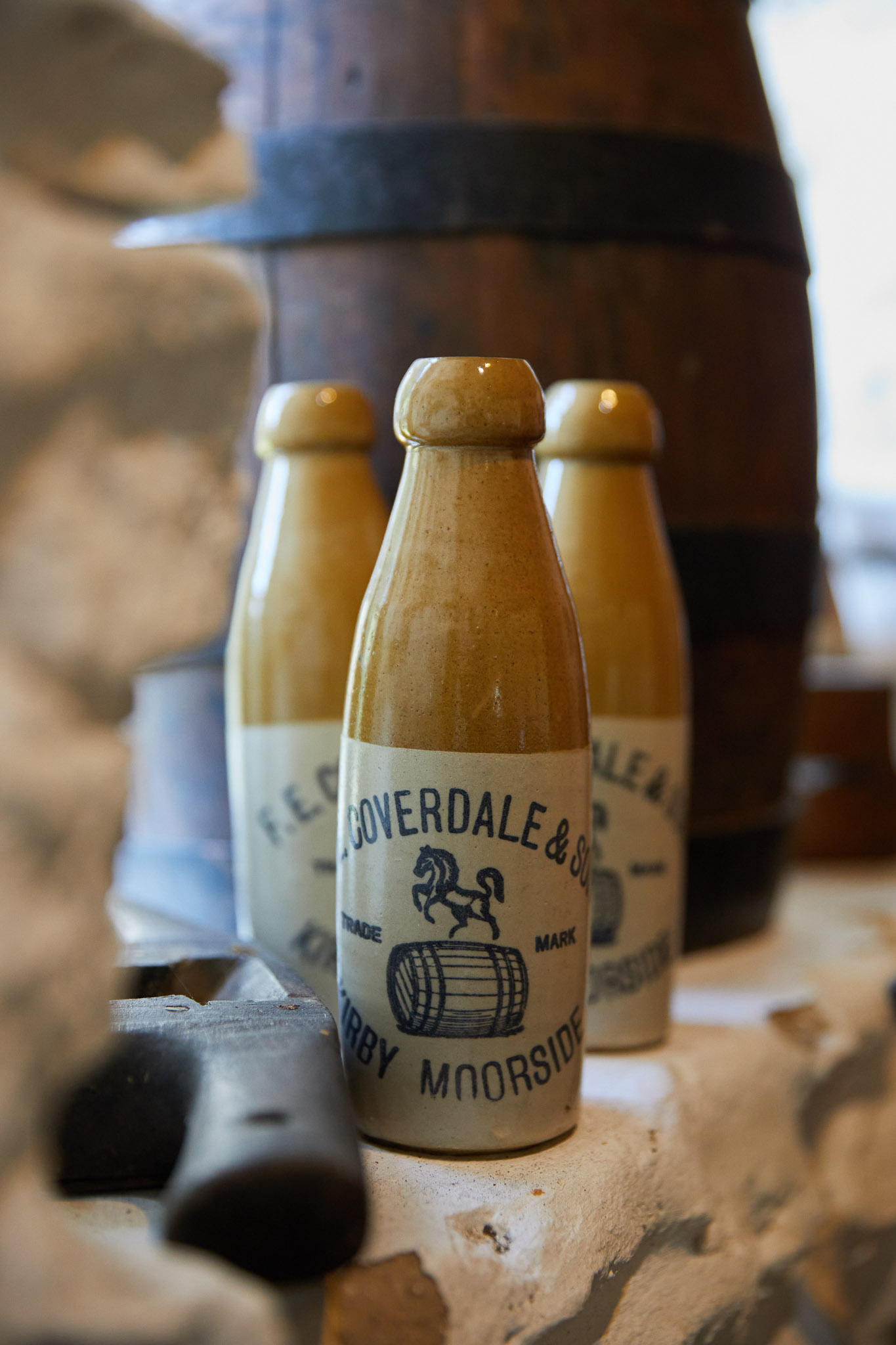
In the Classroom
Compare
Compare the ginger beer bottles with the penny lick ice cream glass on this site. Both items stopped being used because of concerns about hygiene. Would you use either?
Short drama activity
Role play making a telephone call to complain to the manufacturers, explaining your hygiene concerns about one of these products, or act out the scene of complaining in a café.
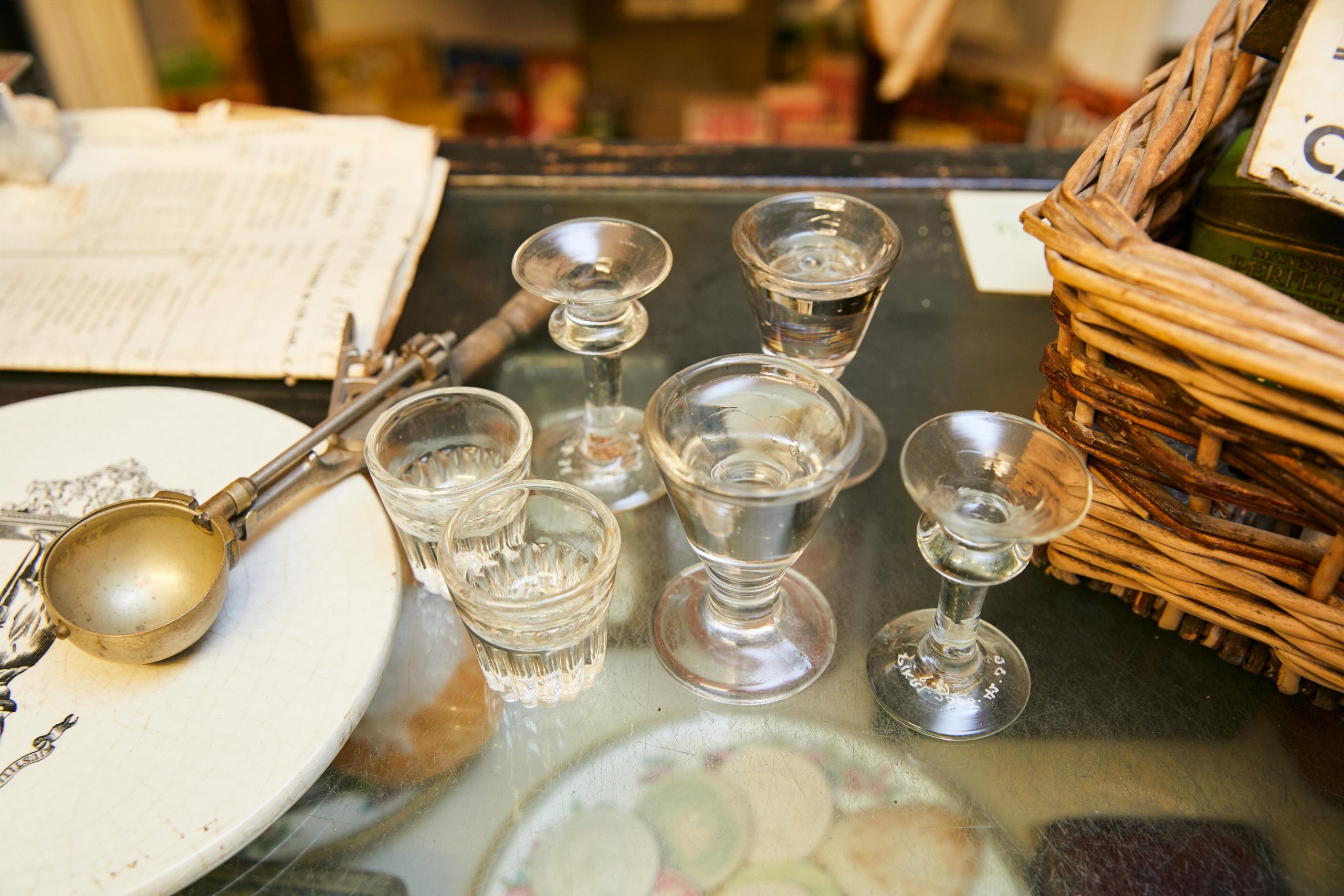
Hands on History
You can find stoneware in museum collections across the country. You can click on the pins on the maps to find out more about the museums with stoneware featured on our site. Discover these Yorkshire.
Discover these Museums in the Highlands of Scotland, or explore more Highland collections at Museum of the Highlands.
Discover objects with a recycling theme
Find more food-related objects



